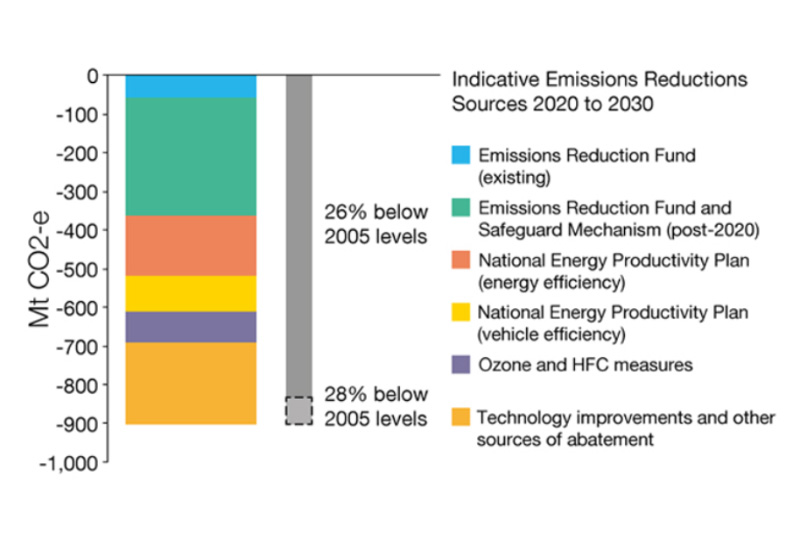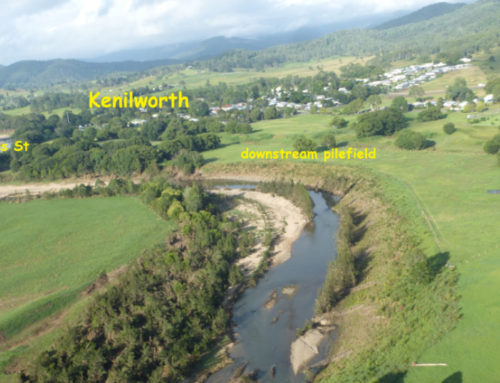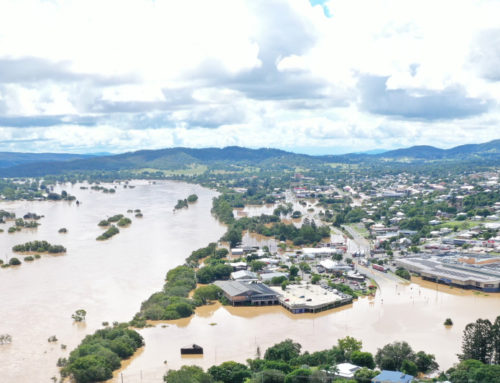In a new worrying announcement dated 4th April 2022, the Intergovernmental Panel on Climate Change (IPCC) has told us that humans are “unequivocally” to blame for rising temperatures, we are outstripping humanity’s ability to adapt and, that we can fix this crisis.
The fix requires us to ensure that global greenhouse gas emissions peak in three years, that is by May 2025, and are cut by 43 per cent by 2030. Achieve that, and we have a 50 per cent chance of staying under 1.5°C of global warming, the threshold for when climate impacts become far more damaging.[1]
Yet, as the IPCC itself points out, without stronger policies from governments, global emissions are projected to keep rising beyond 2025. The current trajectory is for a planet that has warmed by a hellish 3.2°C.
Most Australians know the news, or have had first hand experiences themselves, of two years of floods, fires, coastal erosion and storms, both here and overseas. In fact Australia has warmed on average by 1.44 ± 0.24 °C since national records began in 1910[2].
Scott Morrison, and Angus Taylor, Minister for Energy and Emissions Reduction, say they will meet the IPCC agreed targets of zero greenhouse emissions “in a canter” by 2050, and “reduce our greenhouse gas emissions to 26–28 per cent below 2005 levels by 2030.”
What policy will achieve this? A quick reality check shows we are heading in the wrong direction. Last year, Australia overtook Qatar[3] becoming the world’s largest exporter of liquefied natural gas (LNG). We’re already the world’s second-largest exporter of thermal coal, and largest for metallurgical coal.
The IPCC says global emissions must peak within three years to have any chance of keeping warming below 1.5℃. The IPCC’s Australian Vice President, Professor Mark Howden, says “global emissions must fall 50 per cent by 2030 and reach net zero by about 2045 to limit warming to between 1.5 degrees and under 2 degrees” which is even beyond Labor’s promise.
So how will a ‘gas led recovery policy’ actually work? The development of Australia’s policy has profoundly changed. Government policy is now ‘made on the run’ combined with favours for allies. Morrison, was pushed by both the IPCC’s COP26 meeting as well as facing action demands over our recent catastrophic floods. So unilaterally Australia’s parliamentary policy making process for the past 120 years was sacrificed.
Previously high level policy options in particular areas were produced by senior Ministerial staff working directly for the Prime Minister or a Minister. In Foreign Affairs or Defence these papers are called White Papers. Policies are then discussed by the party’s relevant committee and parliamentary committees and then finally adopted by Cabinet or the ‘Inner Cabinet’ – a small group of the most-senior Cabinet members.
Once the Country Party became the National Party and switched from representing rural interests to one representing mining interests, the tail began wagging the dog, a system enabling the Coalition to govern. And the Nationals made big demands for its support. The price for Nationals electorate ‘sweeteners’ was $A15 billion, forming a significant part of the Coalition’s cash-splash announced just before the election.
The result is the “gas led recovery” and its twin, “the Hydrogen gas revolution”. The PM said there is “no credible energy transition plan for an economy like Australia that does not involve the greater use of gas” following the corona virus recession. He repeated this in a National Press Club address in February 2022.
Morrison’s government has 10 new gas projects lined up, totaling around $A56 billion, due to come online within the next five years.[4]
But our Australian Energy Market Operator, regulator (AEMO), says new gas-fired power is less likely to be affordable than like-for-like alternatives that can provide dispatchable power, such as large government batteries, pumped hydro, domestic rooftop-fed batteries and demand response programs that pay consumers to reduce consumption at peak times.
Hydrogen is a wonderful fuel for energy and moving vehicles. But there are two ways to produce it. With renewable energy or with non-renewable energy. Morrison has chosen the latter, i.e. use non-renewables to produce renewable energy.
Here’s the Morrison’s government’s previous official policy mechanism for achieving their 2030 target.[5]
The largest carbon reduction of over one third comes from the Emissions Reductions Fund, a scheme where rural land owners plant forests on unused land who can then on-sell their carbon offsets commercially to polluters.
This system has recently been subject to media attacks by Australia’s Climate Council as a scam. They claim that many billions of dollars paid by Australia’s government to some farmers are for land so dry the planted forests quickly die. Or for trees that are not new trees but just existing ones.
The Climate Council remains Australia’s foremost climate change expert body, which previously was funded by government but defunded by the Abbott Government in 2013. It is now a non profit headed by IPCC contributors Professors Will Steffen and Tim Flannery.
The next largest source, offering just under one third of our planned emissions reduction, are the National Energy Productivity Plans. However there appears to be appear no additional funding specifically allocated for implemention.
With policy ‘made on the run’ little wonder children are taking to the streets and some newly weds are abandoning the idea of giving birth without action on climate policy.
by Jim Beatson
[1] https://www.newscientist.com/article/2314966-we-can-still-avert-climate-catastrophe-but-there-is-barely-time/#ixzz7QORcvnGi [2] https://www.csiro.au/en/research/environmental-impacts/climate-change/state-of-the-climate/
australias-changing-climate [3] https://www.statista.com/statistics/1262074/global-lng-export-capacity-by-count% [4] https://www.nesfircroft.com/blog/2019/04/10-biggest-upcoming-oil-and-gas-developments
-in-australia?source=google.com [5] https://www.aph.gov.au/About_Parliament/Parliamentary_Departments/Parliamentary_
Librarpubs/BriefingBook45p/EmissionsReduction



